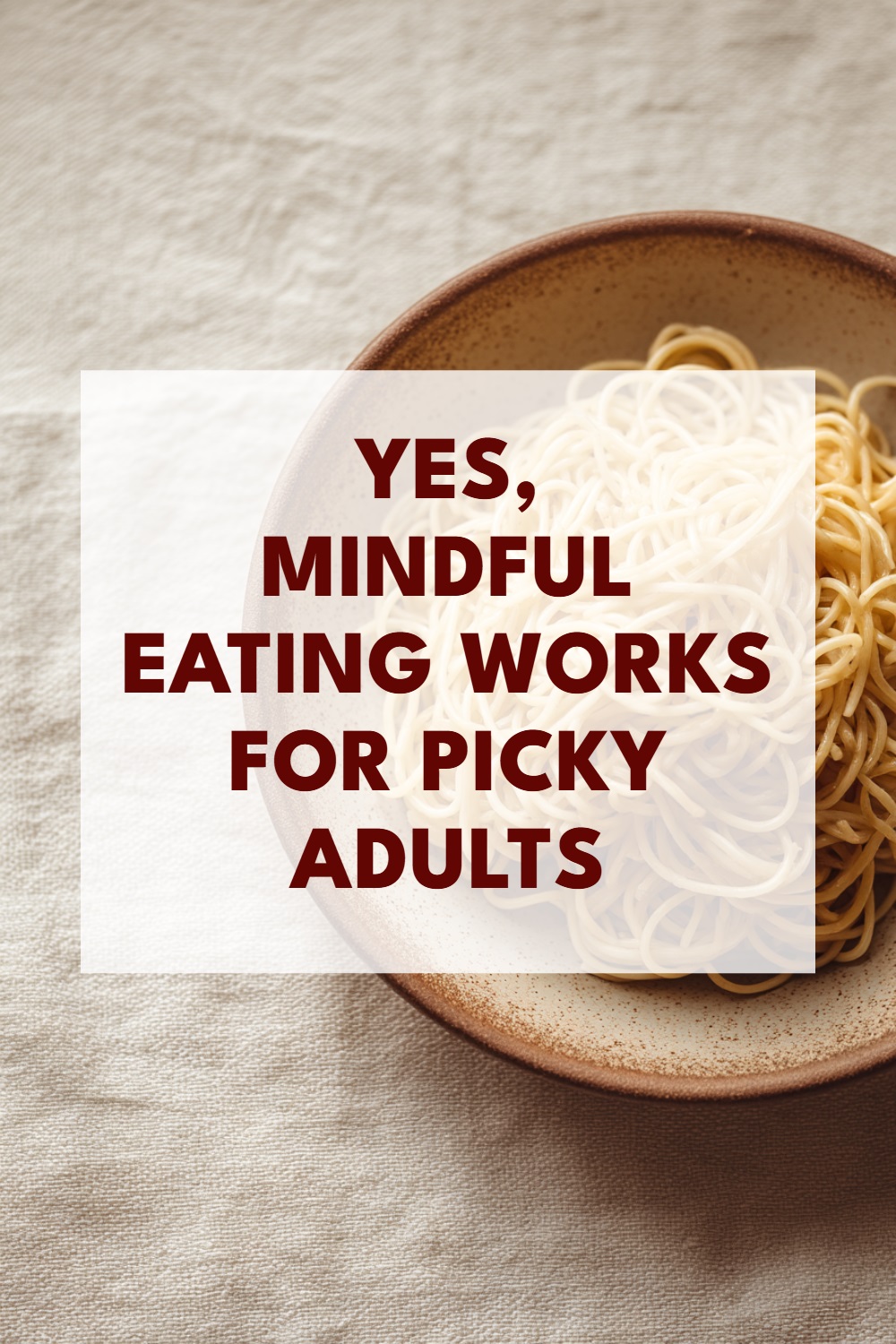Mindful eating sounds like something for people who enjoy salads and quinoa.
But what if you’re a picky eater?
What if most healthy foods don’t appeal to you? Or textures turn you off? Or you feel stuck eating the same few meals over and over?
Can mindful eating still help?
Yes. And actually, it might help more than you think.
Mindful Eating Isn’t About Eating “Perfectly”
Let’s start with what mindful eating isn’t.
It’s not about eating slowly with your eyes closed.
It’s not about chewing each bite 20 times.
And it’s definitely not about forcing yourself to enjoy food you don’t like.
Mindful eating is simply this:
Paying attention to what you’re eating, how it tastes, how it feels in your body, and how it makes you feel afterward.
That’s it. No pressure to love every bite. No rules about what counts.
Just more awareness, and less autopilot.
Why It’s Worth Trying, Even If You’re Picky
If you’re already limited in what you like, it might seem like there’s nothing to be mindful about.
But that’s exactly why it matters.
Mindful eating can help you:
- Get clearer on what foods you genuinely enjoy (not just tolerate)
- Spot patterns, like boredom or stress eating
- Feel more satisfied with the food you do like
- Reduce guilt or pressure around your choices
- Slowly expand your comfort zone, without forcing it
It’s not about fixing you. It’s about supporting you.
Start Where You Are
You don’t need to change what you’re eating right now.
Start with the food you already eat.
Whether that’s mac and cheese, toast, pasta, chicken nuggets, or crackers, it doesn’t matter.
Just bring a little more attention to the experience.
Try These Simple Practices
Here are a few ways to practice mindful eating without adding much effort:
1. Sit down to eat
Even if it’s just for five minutes. Sitting helps you slow down and notice what you’re eating.
2. Remove distractions for the first few bites
You don’t have to eat in silence. Just pause the phone or TV for the first few bites. Give your brain a chance to register the food.
3. Notice the texture and taste
Ask yourself: Do I actually enjoy this? Is it satisfying, or just familiar?
4. Check in halfway through
Are you still hungry? Are you still enjoying it? You’re allowed to stop even if there’s food left.
5. Pause before going back for more
This isn’t about denying yourself. It’s just about checking in. Give yourself a few moments before you grab a second helping or reach for a snack.

Mindful Eating Isn’t a Fix-It Tool
Sometimes people turn mindful eating into another form of control.
They expect it to fix cravings, prevent overeating, or make them eat “better.”
But that’s not the point.
The point is to help you understand what’s happening, not force it to change.
You can be mindful and still eat the whole bowl of pasta.
You can be mindful and still want something sweet after dinner.
That’s okay.
Awareness is a skill. It builds over time.
Use It to Explore New Foods (If You Want)
If you’re open to trying new foods but feel hesitant, mindful eating can help here too.
Try this approach:
- Take one bite of something new, without committing to a whole portion
- Pay attention to the texture, flavor, and how it feels in your mouth
- Ask yourself, “What do I like? What don’t I like? What might make this more appealing?”
No judgment. No pressure to like it.
You’re just gathering information.
Even a small change, like adding a new seasoning or mixing something familiar with something new, can make a difference.
Reframe How You See Being a Picky Eater
Being a picky eater doesn’t mean you’re doing something wrong.
You might be sensitive to textures. You might have a smaller flavor comfort zone. You might have some old habits or associations around food.
That’s okay.
Mindful eating helps you notice those things with curiosity, not criticism.
Instead of trying to “fix” your picky eating, you can work with it.
That’s a much more realistic place to start.
You Don’t Have to Like Everything
This part’s important.
You don’t need to force yourself to like salad. Or broccoli. Or anything else that just doesn’t work for you.
Healthy eating isn’t about loving everything. It’s about building a pattern of eating that supports you.
Mindful eating just helps you get clearer on what’s actually working and what isn’t.
Final Thoughts
Mindful eating isn’t just for health nuts or foodies. It’s for anyone who wants to feel more calm and in control around food.
Even if your food preferences are limited.
Even if you eat the same few meals on repeat.
Even if you’ve struggled to change your eating in the past.
Start by noticing what’s already happening.
Give yourself space to enjoy the foods you do like.
And if you feel ready, use that same awareness to explore something new.
No pressure. No guilt. Just one bite at a time.

